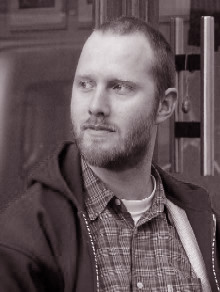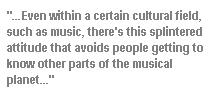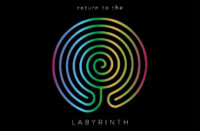
Based out of Germany, Bottrop-Boy was born sometime around Y2K and is the type of label whose mission seems to have kick-started the millennium – endlessly bent on the edge of possibilities. With his keen ear and eyes attuned to the most subtle details, label owner Robert Meijer will soon move his operations to Berlin (Germany) taking some time from his U-Haul to talk about everything from running a small, independent label that produces a limited edition record series to experimental music distribution to the weather!
::..:::…..:..::….:::::..:::..:::::::……:::…::.:::….::::..:..:::…::…….::::
Igloo: It’s great to have some time to find out more about what makes things tick over at Bottrop-Boy headquarters! What’s going on in Cologne these days in music, the weather, arts et al?
Robert Meijer / Bottrop-Boy + EN/OF: Hmm, well I wouldn’t know: I live in the small town of Kleve which is about 1.5 hours away from Cologne on the border with Holland. But both places are part of the Rheinland area, which has traditionally been a healthy area for a lot of different cultural activities. The weather, well the weather is as usual horrible. Too warm for the season, so the animals come out of their hibernating spaces and flowers begin to bloom too early. They’ll all be dead in a month probably when there’s suddenly some extreme cold again for a few days.
Igloo: What makes your label projects different from the larger roster of labels out there? In fact you have three label imprints – so, how are they different? Would you consider the music you produce and promote to be exclusively experimental. How would you describe it to an alien?
RM: Hmm, well I suppose each label is different from the other ones. I always wanted to release artists that I really liked but who already had one or more releases out. I almost never release something because of a demo I receive, or when they’re totally unknown as I don’t see my own labels as the right platform for that. I always wanted these labels to be an outlet for my own choices and tastes in music. So my own music taste is also the only thing that holds it all together.
The 3 labels are different in this way:
Yes, I would consider all my releases coming forth from an experimental view on music. Although some releases might be influenced by more pop/melodic things I still haven’t released anything that I think can be described as mainstream.
Igloo: Tell me how the visual arts play into your overall aesthetic.

RM: Hmm, well I tend to see a wide gap between the visual arts and music. Although it might look otherwise from my label activities I don’t see a lot of similarities between these two areas, which I don’t think is such a problem. Each different art is pretty ignorant of the other arts, and for me the link between visual arts and music is purely that I’m interested in both. EN/OF is an attempt to invite visual artists and musicians to each other’s culture, but I try not to force anything, I leave everything open for the contributors and more importantly to the public.
Igloo: Yeah, I know what you mean about this gap – though in some ways I tend not to agree, I think there are dancers exclusively influenced by sculptors and photographers whose muse are classical pianists. There seem to be countless media artists who merge the fields like M. Behrens, Scanner, Richard Chartier, Terre Thaemlitz, Bjork, John Duncan, Robin Storey, Janek Schaefer, Ultra Red, Steve Roden, Thurston Moore, j.frede – and for that point I guess I could add Matthew Barney, Brian Eno, Robert Wilson, Philip Glass and even Derek Jarman. These seem like composers who fuse the possibilities. I know this may sound like somewhat of a motley crew (and there are far too few women in my list). When I visited the Sonar Music Festival last year and they took over Barcelona’s Center of Contemporary Art with its sound installations by Francisco Lopez, Carsten Nicolai and a horde of video artists and designers, I felt simultaneously at home. As an artist myself, who finds the distinct connection in the fields (and yet does not by any stretch consider himself a musician or composer of sound) I am interested in how artists are changing public awareness about the possibilities of creative exploration. I don’t feel this wave as strongly in the States – seems like the breeding grounds are primarily rooted in Europe. Can you respond?
RM: Hmm, yes you’re right about all those names you mentioned and there are many more, but generally speaking each art is only occupied with its own system. That’s mainly because things like theatre or music are just 2 completely different things, from many points of view. Of course these artists work with blurring these borders but that doesn’t mean they’re successful at it. We’re still at a stage where people are trying out this interdisciplinary creativity. Even within a certain cultural field, such as music, there’s this splintered attitude that avoids people getting to know other parts of the musical planet. I don’t think there’s a difference in attitude between the continents. But I do think that in the US, when an experimental musician also does something in the visual arts, the latter tends to be much more traditional. This is not something I see at all in Europe.
Igloo: It’s my belief that from time to time a sound fad or craze sort of bleeds internationally into the larger populace of sound makers. I am thinking of say, jungle, or lounge or even microsound. Where do you believe the pulse of new music is right now? And in what ways do you feel that may have an effect on trends elsewhere? Do you feel this to be a true collective international consciousness or community building – or do trends just eventually fade away and radiate?
RM: I see the music scene (at least the sort of experimental music in whatever way that can be) as a pretty healthy thing at the moment because there’s no extreme scene or fad right now. To your last question I can only answer yes & yes: this collective thing that comes up when a certain new sound is created, is certainly there and will remain once the trend is already gone.
Igloo: You have worked with Nobukazu Takemura, Steve Roden, Stilluppsteypa, Terre Thaemlitz and many other composer laureates of note. Could you share some of your experiences of working with these folks…what’s the process like? Do you have a studio? Do you meet with artists in person?

RM: No studio, and only occasionally do I meet the musicians as most live far away. I don’t have a studio and always receive final masters without any interference on my part. It certainly is important to work with nice people (and the ones you mention are all really good examples of nice people) of course. It’s nice when the barrier between musician and label (which is a more relaxed version of the relation between a gallery and an artist) get broken down, that’s certainly part of what makes it interesting to run a label.
Igloo: The almighty applause-o-meter overfloweth for your attitude, and such is the case with many of the artists on your roster – they seem like true artists, not pop musicians trying to exclusively sell units, but to generate sound that breaks barriers and are continuously in a state of change, even flux. What volume do you release, are they all limited editions? What is the distribution like? Who ends up the audience in the end? Do you have a relationship with your audience?
RM: About the first part of your quote: I am only partly interested in people’s own sound, as that is not such an interesting question: in a way everybody has his own style/voice. What sounds new or original to me might be totally obvious and old-fashioned to somebody else. I am much more interested in detecting a certain humanity in music, a warmth. But that’s of course extremely personal. EN/OF is all limited, each an edition of 100. Distribution for these are 50% record shops, and 50% art book shops, galleries, etc (or at least it should be 50/50).
The audience: I have no idea… is there such a thing as an audience?
Igloo: Touche! Actually I think what makes the more experimental underground of music to be a great place for a certain sense of invisibility, less glamour, more focus. So, when did you start your work with the label and what prompted it?
RM: I don’t really keep track of time, but the first release was a 7″ on Bottrop-Boy in January 2000, that’s easy to remember. EN/OF is in its third year now. I actually don’t have any specific reason for starting up these labels, it was just always a wish to run one.
Igloo: How much vinyl do you produce? What are your feelings about the medium in these digital days? Having grown up some from earlier cassette culture days when artists and audience would exchange rough cuts in what might be considered a form of mail-art, can you talk about your stance on the whole culture of MP3 releases, pirating music, CDR culture and the like?
RM: I’m a very conservative person when it comes to new media. I haven’t gotten used yet to the new MP3 or CDR culture, which maybe has to do with that materialist streak in me. Music and its carriers have always had a difficult relationship (there still isn’t a perfect medium for reproducing music) but I don’t consider MP3’s or such as a way out of that. I only produce vinyl in the EN/OF series, the other 2 labels are CD-only.
Igloo: Who is Robert Meijer? Where are you from? Tell me something about yourself, your interests, what you do when you are not running these interesting label productions?
RM: You tell me! OK, a short bio: I’m a 26-year-old Dutch tall gay guy who used to study library sciences and until recently worked for a heavy metal record label. When I’m not doing something for my labels I’m sleeping, eating or having sex. And some reading maybe.
Igloo: Are you an artist yourself? Have you tried making music? Do you enjoy piecing together the design and packaging for your label or do you work with others on that?

RM: No artist myself, and haven’t tried my hand at music either. I’m not sure if I’m creative in that sense. A lot of people say (especially in electronic/microsound) that they lost the interest in this sort of music because they can immediately hear which software was used. I have no clue about the technical side of it, and I prefer to keep it like that. Until recently I did most of the design for Bottrop-Boy and Semishigure (EN/OF always has an uniform sleeve) but I was never happy with the results so since last year Meeuw from Amsterdam has been doing it. I like his work a lot.
Igloo: Who would really like to work with in the future? What do you see yourself doing in five years time?
RM: Oh…well long lists of names come up, although many of my wishes have already come true…but huge wishes concerning musicians are Stereolab, Coil, Autechre, Matmos, Kelis, Supersilent, Lambchop, The Beautiful South, Merzbow, Otomo Yoshihide. Visual artists that I haven’t been able to do something with are: Rodney Graham, Kendell Geers, Monica Bonvicini, Mark Dion, Tom Friedman – enough to keep on doing it. In 5 years time, I just hope things are still as great as they are now.
Igloo: Some interesting people out there, for sure. Well it’s been great to chat a bit. Any final thoughts you would like to share or upcoming releases we can expect from your neck of the woods?
RM: There’s a new Christina Kubisch CD out now on Semishigure, and this spring will see new Bottrop-Boy CDs from TV Pow (2CD of remixes), Maja Ratkje & Lasse Marhaug and Rob Mazurek. New releases on EN/OF: Doug Aitken / Steve Roden, Tacita Dean / Text Of Light, Sam Durant / Efzeg and some more. Plus some upcoming exhibitions: a group show in Bethanien Berlin in March, a solo show with the editions in Toronto in September and the first museum show at the end of the year here in Germany.
::..:::…..:..::….:::::..:::..:::::::……:::…::.:::….::::..:..:::…::…….::::












![Pole :: Tempus Remixes (Mute) — [concise]](https://igloomag.com/wp/wp-content/uploads/2025/04/pole-tempus-remixes_feat-75x75.jpg)






![Hasbeen :: Bunker Symphonies II (Clean Error) — [concise]](https://igloomag.com/wp/wp-content/uploads/2025/04/hasbeen-bunker-symphonies-ii_feat-75x75.jpg)
